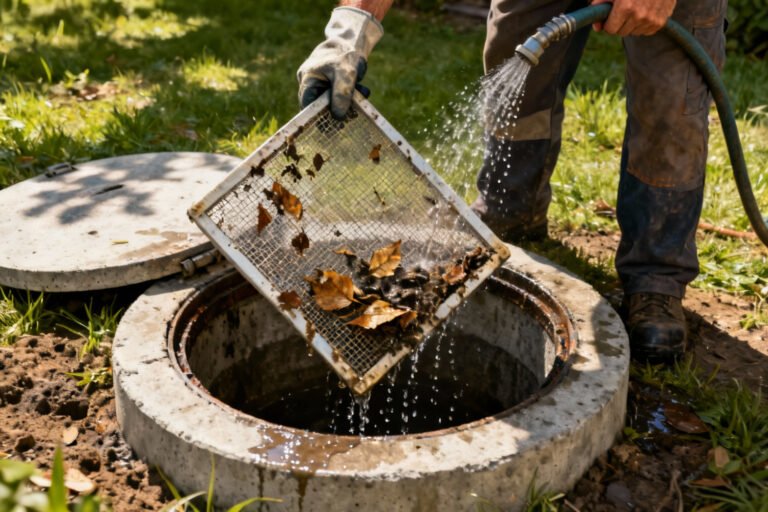Having a sluggish fountain pump can be frustrating—it’s like watching water move in slow motion. While cleaning a pump isn’t the most exciting task, it’s one of those basic maintenance jobs that prevents bigger problems later on. According to Mike Gannon, a pond expert at Full Service Aquatics, “Regular pump maintenance is the single most important factor in keeping your water feature running smoothly. Even a small amount of debris can reduce water flow by up to 50%.” The difference between a beautiful, peaceful water feature and a dirty, green mess often comes down to simple cleaning that many people put off until it stops working.
Some of the links in this article may be affiliate links. If you make a purchase through these links, we may earn a small commission at no extra cost to you. Thank you.
Prevent Pump Burnout Fast

Why do fountain pumps burn out so quickly? It’s often because we let them run dry. Always check that your pump stays fully submerged in water—this is perhaps the most critical maintenance step. We’ve found that cleaning every 2-4 weeks makes a huge difference. Removing debris that causes overheating. Consider installing an auto-fill system, and don’t forget to inspect for wear regularly. Additionally, regularly maintaining the pump can prevent clogging and mechanical failure.
##
We’ll now look at what you should and shouldn’t do when cleaning your fountain pump, along with the specific steps to follow.
I think most people don’t realize that regular maintenance can truly extend the life of their pump by years, perhaps saving them from frustrating replacements. It’s essential to establish a regular cleaning schedule to ensure optimal performance and prevent buildup.
Let’s explore the proper cleaning techniques and common mistakes to avoid, then wrap up with some final thoughts on keeping your fountain running beautifully.
Things to Do When Cleaning A fountain pump
Cleaning a fountain pump regularly is essential for maintaining proper water flow and extending the lifespan of your fountain.
A clean pump guarantees efficient operation, prevents algae buildup, and helps keep your fountain water crystal clear.
When the pump becomes clogged with debris or mineral deposits, it can strain the motor, reduce water flow, and eventually lead to complete failure, making routine maintenance a necessary part of fountain ownership.
- Unplug and remove the pump from the fountain to guarantee safety and prevent electrical hazards during the cleaning process.
- Disassemble the pump by removing the filter or sponge, taking off the cover, and extracting the impeller to access all components that need cleaning.
- Prepare a cleaning solution using mild dish soap and warm water that will effectively break down algae and mineral deposits without damaging pump parts.
- Clean all components thoroughly with a soft brush or cloth, paying special attention to the impeller blades and small crevices where debris often accumulates.
- Rinse everything under running water to remove soap residue and any loosened debris that could affect pump performance.
- Reassemble the pump carefully, making sure all parts are properly seated and secured to prevent operational issues.
- Test the pump by returning it to the fountain, filling with water, and plugging it in to verify proper water flow and function.
Things to Avoid When Cleaning A fountain pump
When cleaning a fountain pump, it’s important to take certain precautions to avoid damaging this sensitive piece of equipment.
The pump is the heart of your fountain, responsible for circulating water and creating the desired aesthetic effects, so improper cleaning techniques can greatly reduce its efficiency and lifespan.
Understanding what to avoid during maintenance will help preserve your pump’s functionality and extend its service life beyond the average 2-5 years.
- Concentrated chlorine bleach: This corrosive substance can damage internal components and lead to mechanical failure of the pump system.
- Harsh chemicals or cleansers: These can erode pump materials and greatly reduce the expected 2-5 year lifespan of the equipment.
- Careless disassembly: Improper handling during disassembly risks damaging or losing important accessories like the impeller, resulting in leaks or reduced efficiency.
- Abrasive cleaning tools: Rough brushes or scouring pads can scratch or crack delicate components, particularly the impeller blades that are essential for water circulation.
- Operating during cleaning: Running the pump while cleaning can reintroduce debris into the system and potentially cause electrical issues that could void warranties on models like WOpet pumps.
Steps
Regular maintenance of your fountain pump is essential for ensuring proper water flow and extending the life of your fountain.
A clean pump prevents algae buildup, reduces unwanted noise, and maintains the aesthetic appeal of your water feature.
By following these simple steps every 2-4 weeks, you can keep your fountain pump working efficiently and avoid potential damage from debris accumulation.
Step 1: Turn off and unplug the fountain pump from the power source.
Step 2: Gently remove the pump from the fountain.
Step 3: Disassemble the pump by removing the filter or sponge at the base.
Step 4: Take off the pump cover to access the internal components.
Step 5: Remove the impeller cap and carefully extract the impeller.
Step 6: Create a cleaning solution using mild dish soap and warm water.
Step 7: Use a soft brush or cloth to scrub all parts, paying special attention to the impeller blades and crevices.
Step 8: Rinse all components thoroughly under running water to remove soap residue and debris.
Step 9: Reassemble the pump in reverse order, ensuring the impeller is properly seated and the cover is securely attached.
Step 10: Place the pump back in the fountain, plug it in, and test to confirm proper water flow.
Final Thoughts
Maintaining your fountain pump through these simple cleaning steps will pay off in the long run.
We’ve found that regular maintenance every 2-4 weeks can extend your pump’s life to 5 years or more.
Remember to pair your cleaning routine with proper water levels and treatments.
Perhaps most importantly, always inspect for wear and tear during cleaning—this small habit, we think, prevents most major fountain issues down the road.
##

Maintaining your fountain pump through regular cleaning is essential for guaranteeing your pet’s water remains fresh and the fountain operates efficiently.
By following the simple cleaning steps outlined—disassembling the pump, cleaning all components with mild soap and water, removing debris from the impeller, and properly reassembling everything—you’ll extend your pump’s lifespan well beyond the average 2-5 years that WOpet and similar pumps typically last.
Regular pump maintenance isn’t just smart—it’s the secret to doubling your fountain’s lifespan and ensuring consistently fresh water for your pets.
Remember that consistency is key; cleaning your fountain pump every 2-4 weeks prevents mineral buildup and keeps water flowing smoothly. Regular cleaning balances water quality and ensures a better environment for your pets.
This regular maintenance not only saves you money on replacement parts but also guarantees your pets always have access to clean, circulating water.
Don’t wait until your fountain stops working properly to take action.
Make pump cleaning part of your regular pet care routine.
Your pets will benefit from fresher water, you’ll enjoy the quiet operation of a well-maintained pump, and you’ll avoid the frustration of unexpected fountain failures.
A few minutes of maintenance every month is all it takes to keep your pet fountain working like new!






